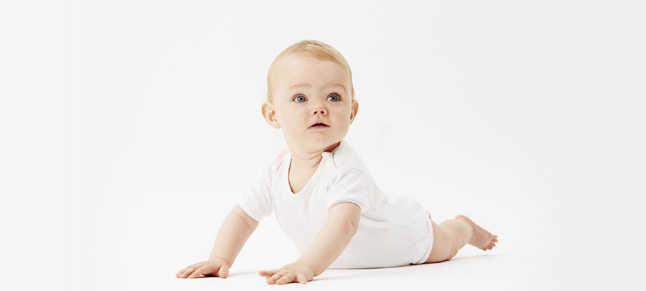

One of the most important milestones for parents in terms of their baby’s development is beginning to crawling. For parents, this is as exciting as baby’s first meaningful voices.
That's why we choose our baby’s crawling period as this week's theme at Mom's Land. But let's just begin with underlying that crawling is not a measure of development according to experts.
Every baby could have different timing and style in crawling. Normally, crawling takes place between 6th and 9th months. However, as we have mentioned before, crawling is not a period that should necessarily be experienced. Just as there are babies who start walking without having crawled, there may be some babies who crawl after they start to walk.
If you have some worries about this period, do not hesitate to consult an expert or a doctor.
With regard to style of crawling, babies could either crawl forward or backwards. While one baby tries to crawl on her hands and knees, others may try to do that with their hands and feet. These are all normal situations.
According to experts, as parents, you may also encourage your babies to crawl. But before doing this, you need to take some measures. Make sure that the environment where your baby crawls is hygienic. You can also cover the place where she is crawling with a soft blanket. Then you put the baby, her face downwards. You can go across your baby and call her to come to yourself. You can keep a toy in your hand so that she will try come towards you to get it from you.
However; let us remind you that, at this stage, you should take the following precautions at home:
1- For the sake of not hurting her knees and hands, you can place cotton blanket, linen on the surface.
2- You should dust off the floor where your baby is crawling.
3- You should not leave around objects she can put in her mouth to prevent the risk of suffocation.
4- You should cover the sharp edges of tables and chairs in your home.
5- If there is a ladder in your home, you should definitely put an obstacle in front of it to prevent your baby’s reach.
6- Lock the drawers or closet doors near to the floor.
7- You should install safety devices in sockets.
8- You should put the extension cables up to places where your baby can not reach.
9- You should keep boxes and bottles containing chemicals in closed and locked cabinets.